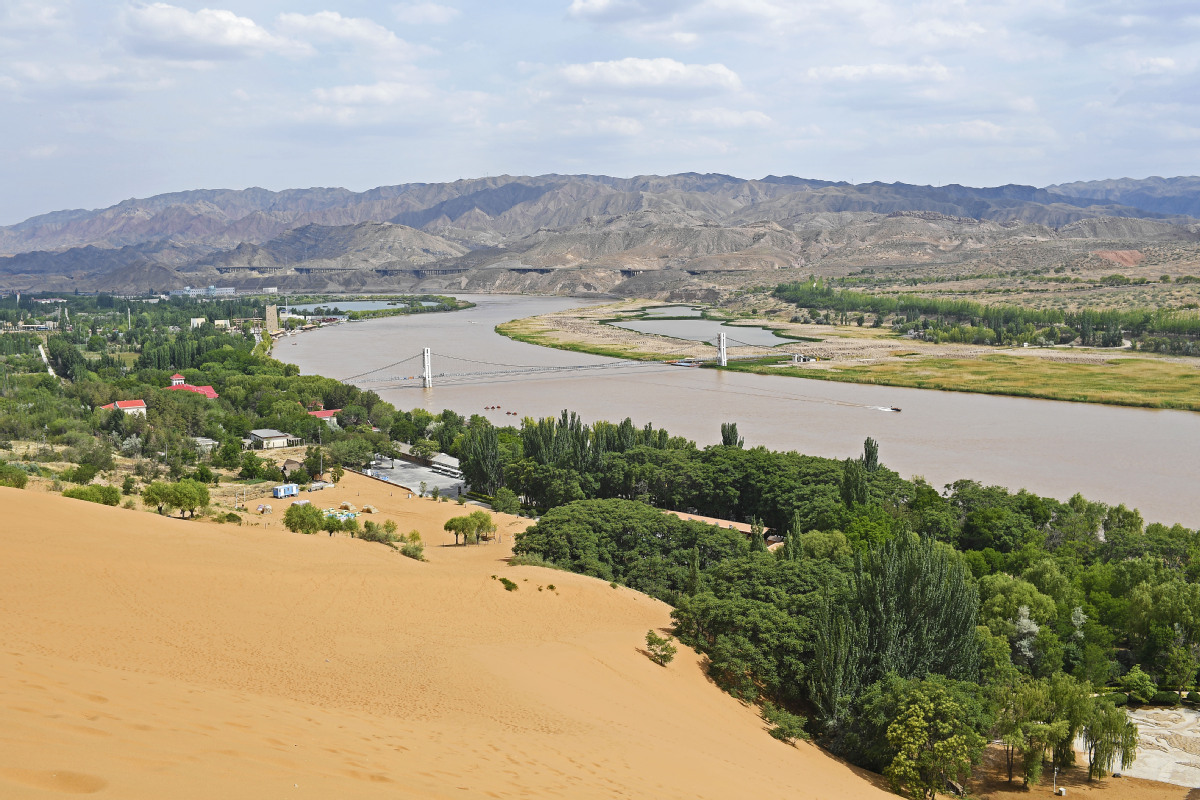 |
|
The Baotou-Lanzhou railway, which runs near the Yellow River, has not experienced problems with sand along its Zhongwei section since 1992. [Photo provided to China Daily] |
Chinese magic cube
In the 1950s, the western side and northern half of Zhongwei was covered by the Tengger Desert, which once reached just 6 kilometers away from its urban areas-even a gentle breeze would blow dust and sand into homes.
In 1955, construction started on the Baotou-Lanzhou Railway-in Zhongwei, the railway needed to cross the Tengger Desert six times, especially in Shapotou area, as the shifting sand was a big threat to the tracks.
According to Zhang Kezhi, 74, the former head of Zhongwei sand stabilization tree farm, experts from the former Soviet Union predicted that within 30 years, the railway would be buried by sand, and the reason was obvious: the vegetation coverage around the railway was less than 5 percent and the dry sand layer could be as thick as 10 to 15 centimeters.
Initially, Zhang and his team's main task was to clean the sand away from the railway as soon as it was found to be covered over. In 1968, the team changed their task-they used wheat straw to pave 1-meter-long checkerboard sand barriers onto the sand to stabilize it, before sowing grass seeds and planting shrubs.
"If you place the square too small, the sand will bury the straw square; and if it is too loose, it won't stabilize the sand and will be easily broken by the wind. The 1 x 1 meter square proved to be the most suitable for halting the movement of the shifting sand dunes," Zhang says.
The straw is put on top of the sand before being partially buried into the sand by shoveling so that around 15 centimeters is above the sand and 10 centimeters is below the surface.